Intro
When the body is fighting off an infection, it's common to experience a range of symptoms, including fever, chills, and fatigue. However, some people may experience a low body temperature when sick, which can be a cause for concern. A low body temperature, also known as hypothermia, can be a sign of a underlying medical condition, and it's essential to understand the causes, symptoms, and treatment options.
In most cases, a low body temperature is not a cause for concern, and it can be treated with simple measures such as resting, staying warm, and drinking plenty of fluids. However, in some cases, a low body temperature can be a sign of a more serious underlying condition, such as an infection, hypothyroidism, or anemia. It's crucial to seek medical attention if you're experiencing a low body temperature, especially if you're also experiencing other symptoms such as confusion, drowsiness, or difficulty breathing.
Low body temperature can be caused by a variety of factors, including environmental factors, medical conditions, and certain medications. For example, exposure to cold temperatures, certain medical conditions such as hypothyroidism, and certain medications such as sedatives can all cause a low body temperature. It's essential to identify the underlying cause of a low body temperature to provide effective treatment.
Understanding Low Body Temperature
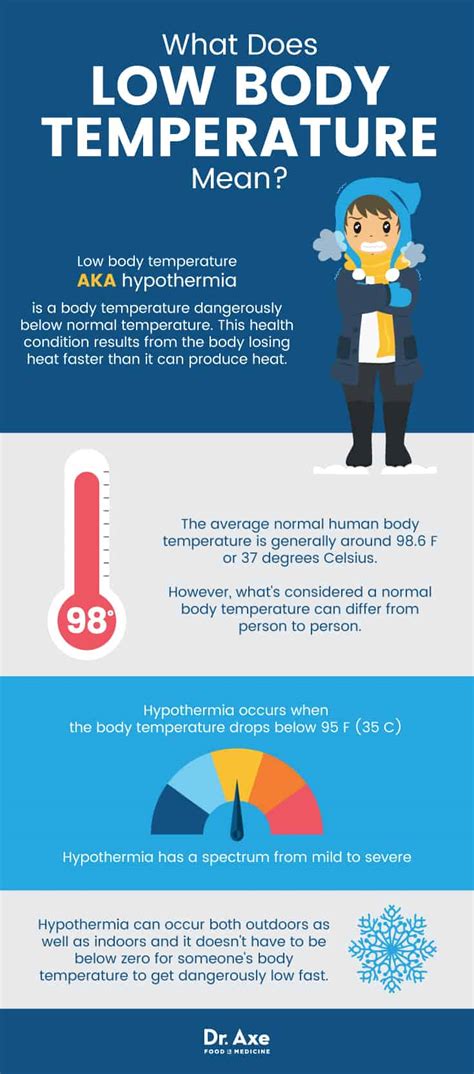
Symptoms of Low Body Temperature
The symptoms of a low body temperature can vary depending on the severity of the condition. Mild hypothermia may cause symptoms such as: * Shivering * Cold skin * Fatigue * Confusion * Drowsiness * Slurred speech * Difficulty breathingSevere hypothermia can cause more serious symptoms, including:
- Unconsciousness
- Coma
- Cardiac arrest
- Respiratory failure
Causes of Low Body Temperature
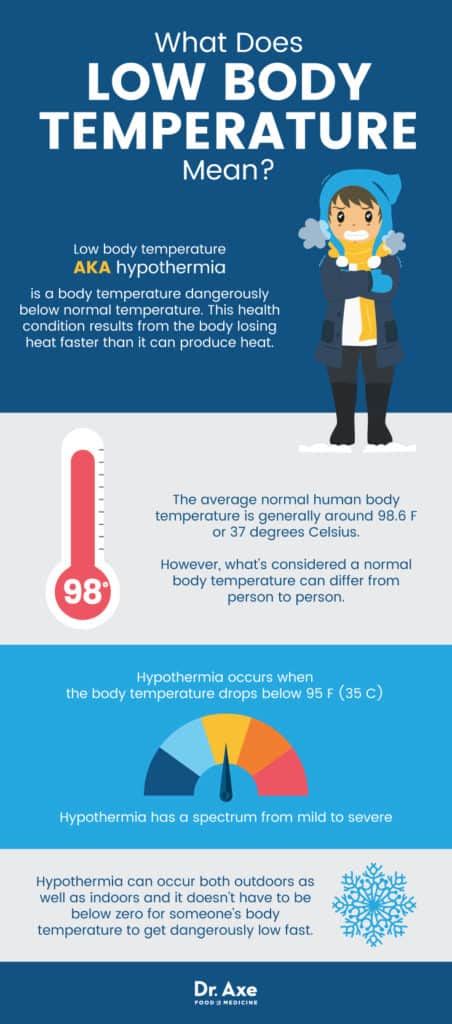
Treatment Options for Low Body Temperature
Treatment for a low body temperature depends on the severity of the condition. Mild hypothermia can be treated with simple measures such as: * Resting * Staying warm * Drinking plenty of fluids * Eating warm, high-calorie foodsSevere hypothermia requires immediate medical attention. Treatment may include:
- Warming the body with warm blankets or warm water
- Providing oxygen therapy
- Administering medications to increase body temperature
- Providing cardiac monitoring and support
Prevention of Low Body Temperature
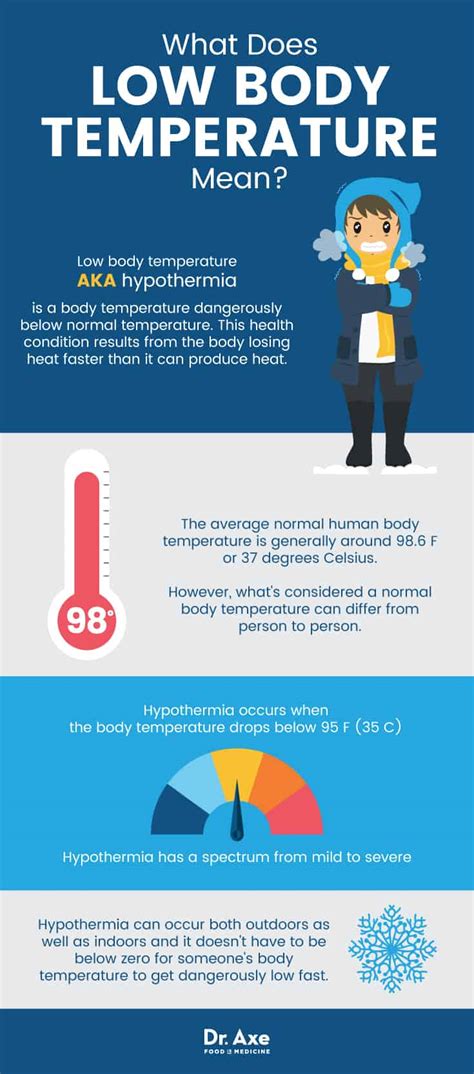
Risk Factors for Low Body Temperature
Certain individuals are more susceptible to hypothermia, including: * Older adults * Young children * People with certain medical conditions, such as hypothyroidism and anemia * People taking certain medications, such as sedatives and antidepressants * People who are exposed to cold temperatures for extended periodsComplications of Low Body Temperature
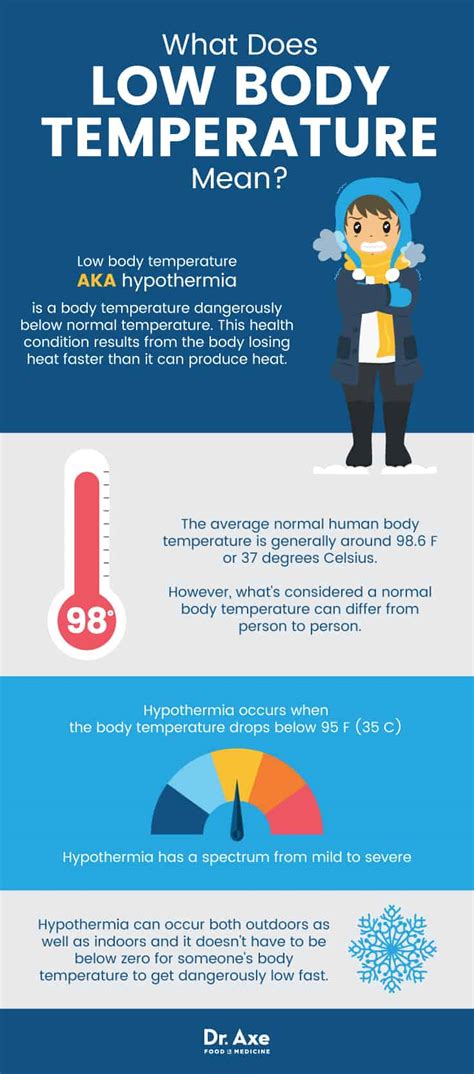
Diagnosis of Low Body Temperature
Diagnosing a low body temperature involves measuring body temperature with a thermometer. A physical examination and medical history may also be necessary to determine the underlying cause of the condition.Management of Low Body Temperature
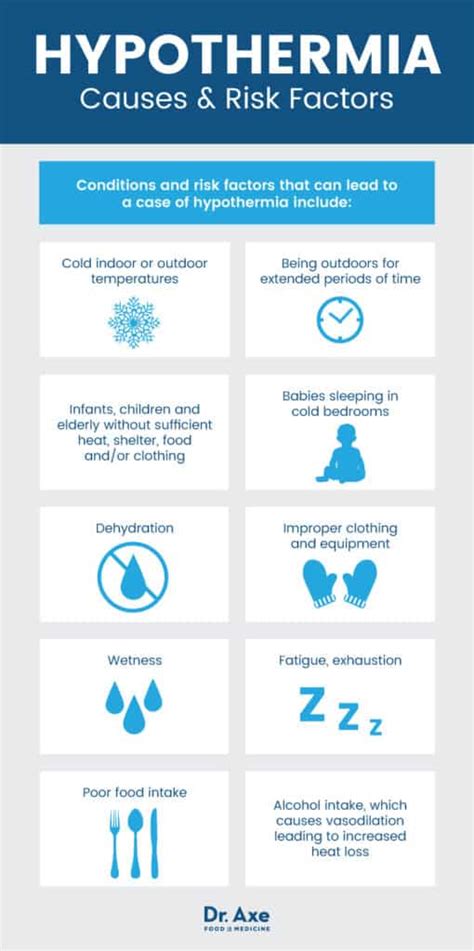
Prognosis of Low Body Temperature
The prognosis of a low body temperature depends on the severity of the condition and the underlying cause. With prompt treatment, most people can recover from a low body temperature. However, if left untreated, a low body temperature can lead to serious complications and even death.Conclusion and Next Steps

What is a low body temperature?
+A low body temperature, also known as hypothermia, is a body temperature that is below 95°F (35°C).
What are the symptoms of a low body temperature?
+The symptoms of a low body temperature can vary depending on the severity of the condition, but may include shivering, cold skin, fatigue, confusion, drowsiness, and difficulty breathing.
How is a low body temperature treated?
+Treatment for a low body temperature depends on the severity of the condition, but may include warming the body with warm blankets or warm water, providing oxygen therapy, and administering medications to increase body temperature.
Can a low body temperature be prevented?
+Yes, a low body temperature can be prevented by dressing warmly in cold weather, staying dry and avoiding wet clothing, avoiding exposure to cold temperatures, eating warm, high-calorie foods, and drinking plenty of fluids.
What are the complications of a low body temperature?
+If left untreated, a low body temperature can lead to serious complications, including cardiac arrest, respiratory failure, coma, unconsciousness, and organ damage.
